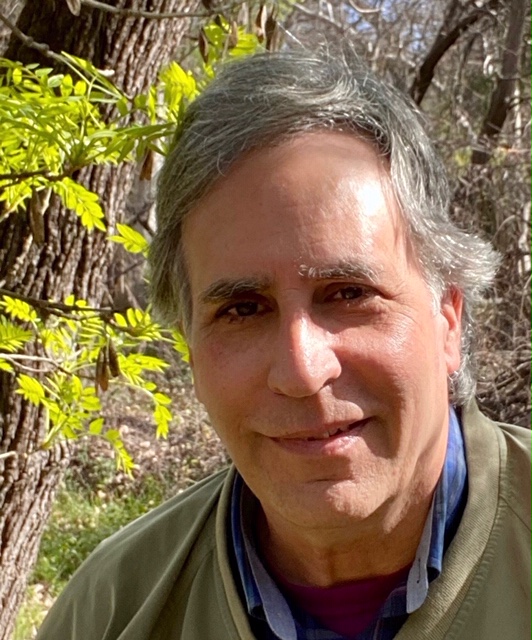Children of Fire
In his excellent book, ''The Neanderthal’s Necklace,'' Juan Luis Arsuaga, a paleo-anthropologist and professor at the University of Madrid, provides a clear and cogent discussion of consciousness. Arsuaga poses a provocative question in a section entitled “Darwin vs. Wallace”: Did human consciousness come into existence through incremental changes, or through “one great qualitative leap?”
This is worth going into, because it pertains to the next shift in consciousness, which is occurring now. The basic feature of that radical change is switching from a consciousness based on symbols, thought, and self, to a consciousness based on attention, awareness, and insight.
The rare but universal phenomenon of so-called mystical experience provides the precedent for this new consciousness. Of course because of its very nature, ‘mystical experience’ is hard to define. For this reason, it has heretofore been the domain of religions and theology. Is there a language for the new consciousness that fits our scientific age, and yet does not reduce and detract from the essential character of the meditative state?
Arsuaga employs two useful models in looking at the evolution of symbolic/thought consciousness, which are also applicable in examining mystical experience and the transmutation of human consciousness. The first is a concept called “emergent properties,” derived from systems theory. The second is the terminology of aptation, adaptation, and exaptation.
Arsuaga discusses a theory proposed by a colleague, Ian Tattersall, of the American Museum of Natural History, in which “cognition and language emerged in functional contexts distinct from their present one’s.” The function that originally evolved is termed an aptation. In Tattersall's view, our large brains and vocal apparatus “were [initially] unable to produce either cognition or language.” But when “new neurological pathways established the necessary connection,” the mind as we know it came into being, as an “emergent property.”
Scientists now refer to an evolved characteristic that does not change as an adaptation. A characteristic or function that evolved for one purpose but came to be used for another is called an ‘exaptation.’ Feathers are the quintessential example of an exaptation. They evolved as excellent “thermal insulators on the bodies of a certain group of dinosaurs, but came to be used by birds, a subgroup of the plumed dinosaurs, to enable flight.”
As Arsuaga eloquently points out, “any innovative rearrangement of elements has the potential to endow the system with a revolutionary new property.” Though he believes language and cognition are adaptations and not exaptations, the exaptation scenario for the evolution of conscious thought rings true to me. Thus, the early human mind was able to evolve from subconscious and imitative learning in Homo ergaster, to creative and self-reflective symbol manipulation (what we call ‘higher thought’) in Homo sapiens. We are in the midst of undergoing a third radical change in consciousness, this one requiring full conscious awareness.
If you’re still with me, this is where things get difficult, but very interesting. As we can see from the state of the world, symbolic consciousness produces increasing division, conflict, and fragmentation. The human primate has become a planet killer. Therefore the contradictions and pressures of the old consciousness are necessitating a transmutation. That is, a new kind of consciousness altogether.
Intensely but passively observing the chatter of thought gathers sufficient attention to shut off the filtering mechanism of the brain, and cleanse the caked windows of perception. That state is what the West calls “mystical experience,” and the East calls “Samadhi.” It is this action, or inaction, which enables the brain to awaken creative insight and “rearrange the elements to endow the system with a revolutionary new property.”
I maintain that archaic human consciousness has reached its limit, and that we are, as a species, in a messy transition to a new type of consciousness altogether, requiring a conscious transmutation in those with the capacity and drive to awaken it.
The vast majority of people of course, don’t want to change, much less bring about a transmutation of their consciousness. But such people are, in the infamous words of Donald Rumsfeld (who exemplifies the type) “dead-enders.” When enough stress builds up in a system, evolution, and the cosmic intelligence intrinsic to it, compels radical change.
Arsuaga betrays the horns of the human dilemma when he says: “we receive so much information by means of our senses that we need to rapidly, automatically, and unconsciously select only the most important data from among it. Only the stimuli that pass through a mental filter produce reactive behavior” (italics mine).
That means we face a tremendous existential choice: become increasingly unconscious and unaware, a race of automatons and zombies; or grow in attention and awareness, and make the transition to a new consciousness altogether.
In the terms above, symbolic thought, which is pushing us to the brink, is potentially an exaptation for awareness of the infinite and thus, infinite awareness. That, I submit, is the future of humanity.
- Martin LeFevre is a contemplative, and non-academic religious and political philosopher. He has been publishing in North America, Latin America, Africa, and Europe (and now New Zealand) for 20 years. Email: martinlefevre@sbcglobal.net. The author welcomes comments.



 Eugene Doyle: Quiet Mutiny - The U.S. Army Falls Apart
Eugene Doyle: Quiet Mutiny - The U.S. Army Falls Apart Gordon Campbell: Papal Picks, And India As A Defence Ally
Gordon Campbell: Papal Picks, And India As A Defence Ally Binoy Kampmark: The Selling Of America - Ending The US Dollar’s Exorbitant Privilege
Binoy Kampmark: The Selling Of America - Ending The US Dollar’s Exorbitant Privilege Frances Palmer: Remembering Vietnam And Cambodia 50 Years On During ANZAC Week
Frances Palmer: Remembering Vietnam And Cambodia 50 Years On During ANZAC Week Binoy Kampmark: Euphemistic Practices - The IDF, Killing Aid Workers And Self-Investigation
Binoy Kampmark: Euphemistic Practices - The IDF, Killing Aid Workers And Self-Investigation Gordon Campbell: On The Left’s Electability Crisis, And The Abundance Ecotopia
Gordon Campbell: On The Left’s Electability Crisis, And The Abundance Ecotopia